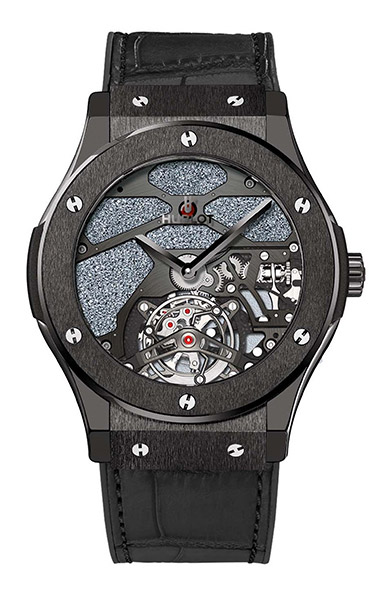If luxury equates to rarity, then no precious metal is as opulent as osmium. For the first time ever in the world of watchmaking, Hublot has incorporated osmium, one of the rarest metal elements on our planet, into a watch: the Classic Fusion Firmament.
A classic fusion bearing the most precious of all precious metals.
Osmium is found in platinum ores and is so rare that approximately 10,000 tons of platinum ore will yield a mere 28 grams of osmium. Platinum is a rare enough metal, and yet when comparing global reserves, there is approximately 13’000 tons of platinum, as opposed to around 200 tons of osmium. In fact, Osmium is the least abundant stable element in Earth’s crust with an average mass fraction of 50 parts per trillion in the continental crust.
Because osmium is fairly volatile in its pure metal state, Hublot uses its crystallized form in the Classic Fusion Firmament, formed from a unique process developed by a team of scientists and researchers in the neighboring Swiss canton of Valais. This process enables the osmium metal to reach its melting point of 3’033°C degrees, changing its structure and transforming it into Osmium crystal, a much more stable form of the element.
Housed in a 45mm polished and satin-brushed black ceramic or entirely polished platinum case, Hublot have gone so far as create not only a dial made of osmium, but also a movement in the Classic Fusion Tourbillon Firmament where the metal crystals are incorporated into the skeleton tourbillon movement; providing a mesmerizing contrast against the anthracite ruthenium-treated bridges visible on both sides of the movement.
Casting silver and blue reflections from its crystals that vary in size from a mere 10th millimeter to just a few millimeters, the osmium elements that can be likened to a clear, star-filled night sky, which is where the name “Firmament” comes from. The term is used to denote the heavens or the sky as a tangible mass, a notion that was widespread among many ancient civilizations.




